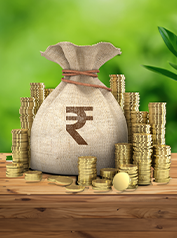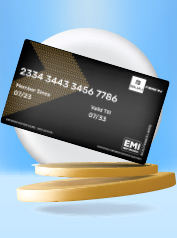
Table of Contents
There are different types of silver available in the market. Each kind of silver possesses distinct characteristics and applications you can choose based on your requirements and preferences.
Various silver types and prices are based on the purity of the silver as well as the kind of supporting metal that is mixed with the pure silver. Whether it is in the making of silver jewellery, different types of silver chains, cutlery products, or various types of silver ornaments, silver finds its applications in numerous forms.
Read on for a brief overview of different types of silver grades, the process of testing the silver quality and more.
Here is a quick rundown of silver grades with a few essential characteristics.
1. Sterling .925 Silver
Sterling .925 silver is known as the jewellery quality standard, and it is the best type of silver for jewellery, which can be used to make different types of silver anklets, types of silver necklaces, rings, etc.
It has a high silver purity, with 92.5% of pure silver and other supporting metals standing at 7.5%
The addition of alloy in silver enhances the colour and shine
Jewellery made of Sterling Silver is prone to scratches or damage and, thus, needs to be handled carefully
.925 and Stg are common quality stamps for this type of silver
2. Argentium Silver
Argentium silver or non-tarnish alloys contain a silver purity of 92.5%
Copper and germanium are the common supporting metals, with germanium increasing the hardness and tarnish resistance
This kind of silver requires less maintenance than Sterling Silver
It has a higher price point when compared to Sterling Silver
Distinguishing this type from sterling silver is difficult since they both have a quality stamp of .925
3. Coin Silver
The purity of coin silver stands at .900, which means it contains 90% silver and 10% copper
Coin silver is available on the market with a quality stamp of .900
Due to their rarity, coin silver jewellery pieces are considered antiques
4. Fine .999 Silver
Fine Silver holds the highest purity since it is marked .999, which indicates a purity level of 99.9%
As compared to Sterling Silver, this silver holds a lower level of shine with a grey and slightly dull colour
Fine Silver is soft and can change its shape easily if you apply force
Fine Silver is not considered the best type of silver for jewellery due to its softness and lower level of lustre when compared to Sterling Silver
Fine Silver can be used to make earrings or different types of necklaces since they have a lower chance of damage
Due to its softness, Fine Silver is easily moldable
.999 FS or.999. is a quality stamp you need to look for when purchasing Fine Silver
5. Bali, Mexican or Thai Silver
Bali, Thailand, and Mexico are known for producing high-quality silver, which is used for jewellery
If you are looking to purchase this kind of silver, ascertaining the actual value requires quality stamps and additional indicators of quality and silver content
6. Nickel Silver
Nickel silver is a base metal alloy which generally includes copper, along with nickel and/or zinc, and it does not include pure silver
It is used for jewellery and is also known as German Silver as well as Alpaca Silver
It is an inexpensive base metal, and it resembles Sterling Silver in appearance
Nickel silver is relatively soft
7. Silver-filled
Silver-filled consists of about 5% or 10% Sterling Silver, which is fused with heat and pressure to other supporting metals
It does not have consistent metal content, and Sterling Silver is concentrated only on the surface
Silver-filled cannot be cast owing to its layered structure
It is considered a lower-quality product compared to Sterling Silver
Silver-filled jewellery and items are prone to tarnish
8. Silver Plated
This kind of silver is generally used for jewellery where the base of the jewellery is made of base metal with a very thin layer of silver applied to the outer surface
The actual silver content on the item is minimal
Silver-plated jewellery is considered affordable due to the lower quantity of silver in the item
Silver-plated jewellery is subject to tarnish over time, and after the outer layer of silver strips off, the base metal underneath becomes visible
Silver-plated jewellery does not have a quality stamp, but it may contain the logo of the manufacturer or a hallmark
9. Tibetan or Tribal Silver
Tibetan silver is also known as tribal silver, and it is a base metal alloy that imitates the appearance of actual silver
Tibetan silver does not include pure silver
Ascertaining the actual value of silver in Tibetan silver can be difficult
Check out the different ways of checking the silver quality of different types of silver.
1. Check Authentication Stamps and Hallmark
The easiest way of testing the quality of your silver item is by checking the authentication and quality standard stamps along with hallmarks. These stamps and markings indicate the purity as well as the authenticity of the silver.
Hence, paying attention to these quality standard markings can help you identify genuine silver.
2. Wet Chemical Analysis
Wet chemical analysis is yet another method to determine the purity of your silver item. This method requires the extraction of a small part of silver from your item and dissolving it in a chemical solution.
Wet chemical analysis is a precise and widely used method for checking the purity of silver in your jewellery or any other silver item.
3. Polish Test
A polish test refers to checking the polish on your silver jewellery or any other silver item. This test is not considered a reliable method for checking the silver quality. While pure silver tends to polish well and provides a bright shine, other similar metals can also be polished to make them appear like silver.
4. X-ray Testing
X-ray testing is a method to determine the purity of your silver item, which does not cause any damage to the silver item. This method involves using X-ray technology to analyse the quantity of the precious metal in your item.
X-ray testing is a reliable and widely used method for assessing the quality and authenticity of the silver in any item.
5. Flake Test
The flake test is yet another method of assessing the quality of your silver item or jewellery by scratching the surface of the item to see if it flakes off. Silver with a higher purity will not flake.
On the other hand, a lower-quality silver or alloy may flake, revealing a different metal underneath. It is essential to note that using this method to check the quality or purity of your silver may lead to damage or scratches on your silver item.
6. Magnet Test
Since silver is non-magnetic, the silver test is used to check the authenticity of the silver. If it is pure silver, it will not stick to the magnet. On the other hand, if the purity of silver is not high, it may stick to the magnet.
Understanding different types of silver and methods to check their purity helps you purchase the right type of silver. After all, silver is a potential investment option that can help you earn handsome returns across a timeline.
The type of silver that is suitable for you depends on your requirements. Sterling .925 Silver is generally considered the best type of silver for jewellery. On the other hand, if you wish to purchase silver for investment, then Fine .999 Silver is the best option due to the higher level of purity.
The prices of different types of silver vary based on the purity of the silver. The purity of silver is directly related to the price of silver. Fine .999 Silver is the most expensive type of silver since it holds a purity level of 99%.
Sterling .925 Silver is the best type of silver for jewellery because it has a higher level of durability as well as a brighter shine. It is best for daily wear since it does not get damaged or scratched easily.
Cutch silver, or Kutch silver, is a highly recognised type of silver which is generally used for making different types of silver ornaments and decorative pieces.
Pure silver has a bright metallic appearance with a white-grey colour.
Academy by Bajaj Markets












